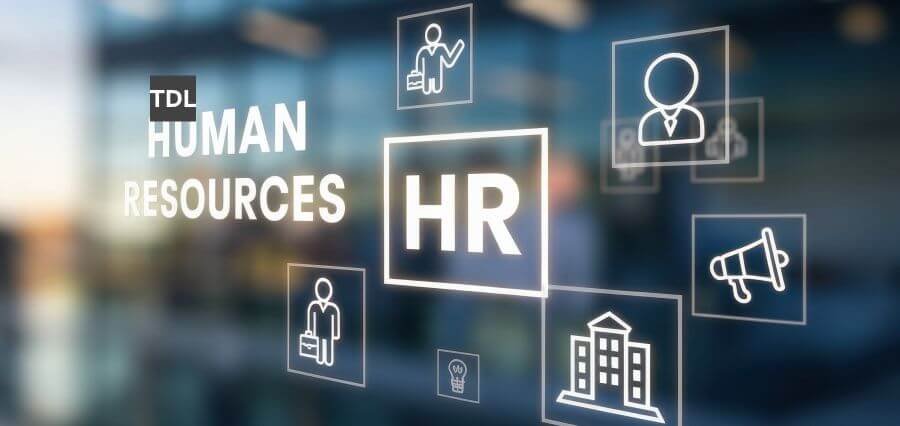In a world of fast digital change and changing employee expectations, human resource (HR) activities are changing at a tipping point with the advent of next-generation technology. HR is no longer a back office administrative function but is increasingly a business performance accelerator. As companies battle to remain one step ahead of the game in an increasingly fast-moving international world, HR software is being created to manage a multi-faceted workforce, enable hybrid work behaviors, and inform better decision-making through analytics. All of which calls upon HR functions to re-engineer talent recruitment, retention, and administration. From artificial intelligence to staff health software, emerging HR software trends are helping businesses build people-centric, elastic, and agile workspaces. Businesses that stay up to speed with these trends will be in the best position to streamline operations and create strong employee experiences.
AI-Based Recruitment and Talent Management
Artificial intelligence is revolutionizing the recruitment and talent management sector at a rate which is breakneck. Certain HR software programs used incorporate machine learning to perform mechanical functions like screening resumes, rating candidates, and interviewing. AI-based tools are able to sift through dozens of resumes to pick the most qualified candidates on the basis of qualifications, skill set, and compatibility with the corporate environment, relieving the recruiters from spending time on low value-added exercises. A few portals even possess AI-powered chatbots that have the ability to converse with candidates, address FAQs, and provide real-time feedback on the application status.
Artificial intelligence is also being used more and more in general talent management initiatives. Using predictive analytics, HR technology can identify patterns of worker performance and engagement to forecast the risk of turnover, recommend career paths for advancement, and choose candidates of high potential for future executive ranks. Through active talent management, organizations can have the workforce ready in advance of upcoming business goals and avoid bad hire or unwanted turnover expense. Business organizations using AI-based HR technologies will be more likely to remain competitive in the rapidly changing talent landscape of the day.
Employee Experience Platforms and Well-Being Tools
Employee experience is increasingly becoming a strategic objective for HR leaders in the changing work environment of the day. Employee experience is not only intended in the modern-day HR software solutions for managing HR tasks, but it should also enhance the feeling of employees towards work and workplace. Employee experience platforms have real-time feedback features, recognition engines, pulse surveys, and communication centers that are utilized by the HR teams to monitor engagement and solve issues in real-time. Employee experience platforms foster a feeling of belonging and inclusion and provide insights that facilitate ongoing improvement of organizational culture.
Apart from experience platforms, well-being apps are also being incorporated as part of end-to-end HR solutions these days. The apps offer employees access to mental health care, stress management programs, fitness tracking, and work-life balance assistance. Dashboards in the majority of the platforms allow HR leaders to visualize how aspects of the workplace are affecting the well-being and productivity of employees. As companies battle to attract top talent, offering digital solutions to boost well-being is no longer optional. It is now a differentiator that can contribute to the drive for employee engagement and burnout reduction throughout the company.
Data-Driven HR and People Analytics
Increased access to workforce data has transformed HR into a strategic and analytical role. Modern HR software is equipped with embedded analytics that enables businesses to realize more advanced sets of information regarding hiring, performance, diversity, and the engagement of employees. The software contains intuitive dashboards and reporting features that support HR professionals to identify trends, find areas of inefficiency, and inform decisions with sound facts. This allows HR functions to fix problems and measure performance more fact-based.
Easier solutions are descriptive analytics. More advanced solutions are predictive and prescriptive analytics. These capabilities allow businesses to forecast staffing needs, predict turnover, and measure the probable effect of various HR interventions. Analytics, for instance, can give HR leaders a perspective regarding what training programs are yielding the highest return or what segments are most at risk of burnout. With accurate, real-time information, organizations are more capable of planning, managing risk, and achieving improved workforce results. Availability of data is proving to be one of the competencies for modern HR functions unable to align talent plans with business plans.
Conclusion
HR of the future is being shaped by a technological revolution that is enabling smarter, faster, and more tailored solutions to managing people. In a time when businesses are battling talent shortages, flexible work, and rising employee expectations, effective HR software can become the difference-maker. Recruitment and talent management are now being automated with AI, employee experience platforms are setting workplace engagement, and people analytics are transforming decision-making in HR. In an effort to remain competitive and up to date, organizations must embrace such trends and give prominence to the implementation of flexible and scalable HR technologies. Since HR is now becoming a more strategic enabler than support functions, the proper software solutions will be crucial in creating a workforce that will be able to meet future needs.




